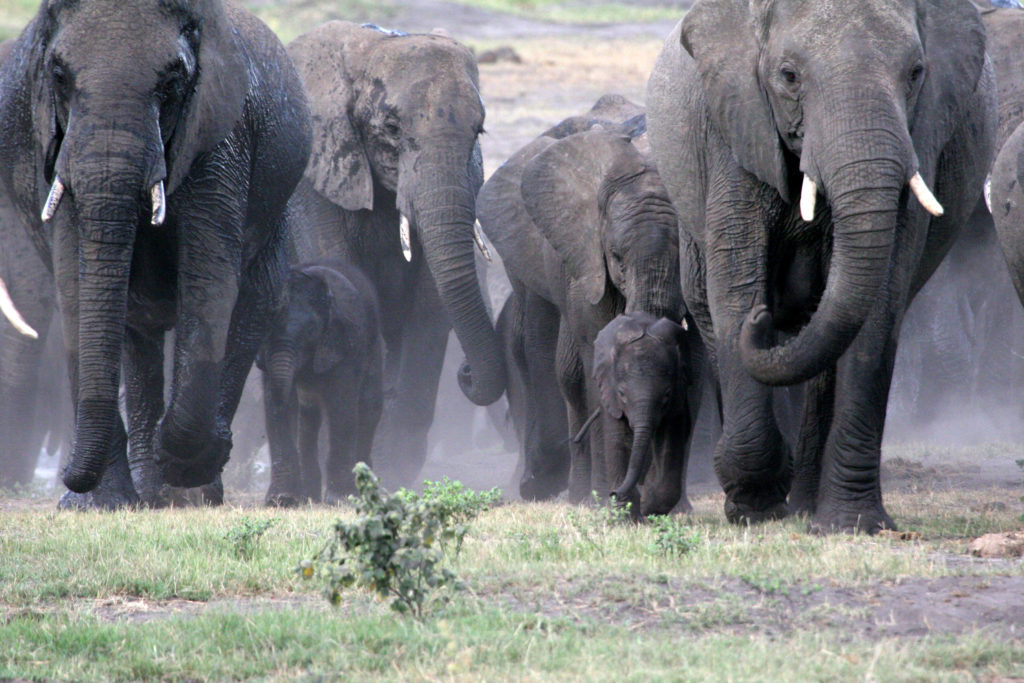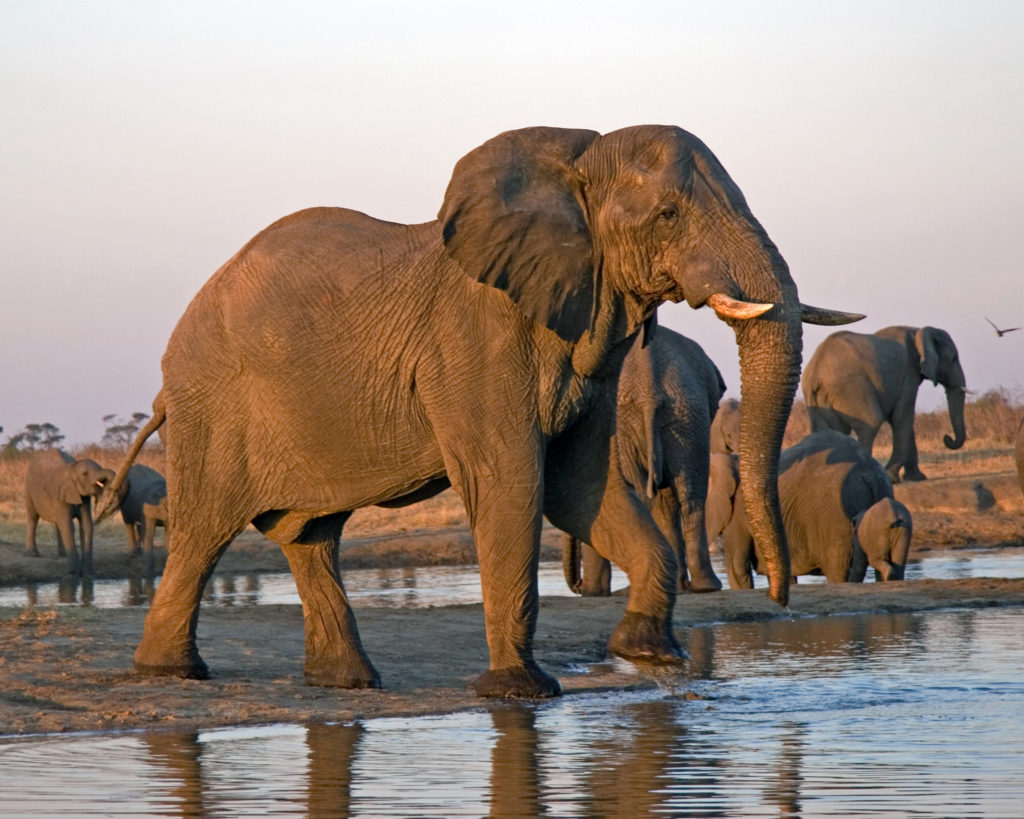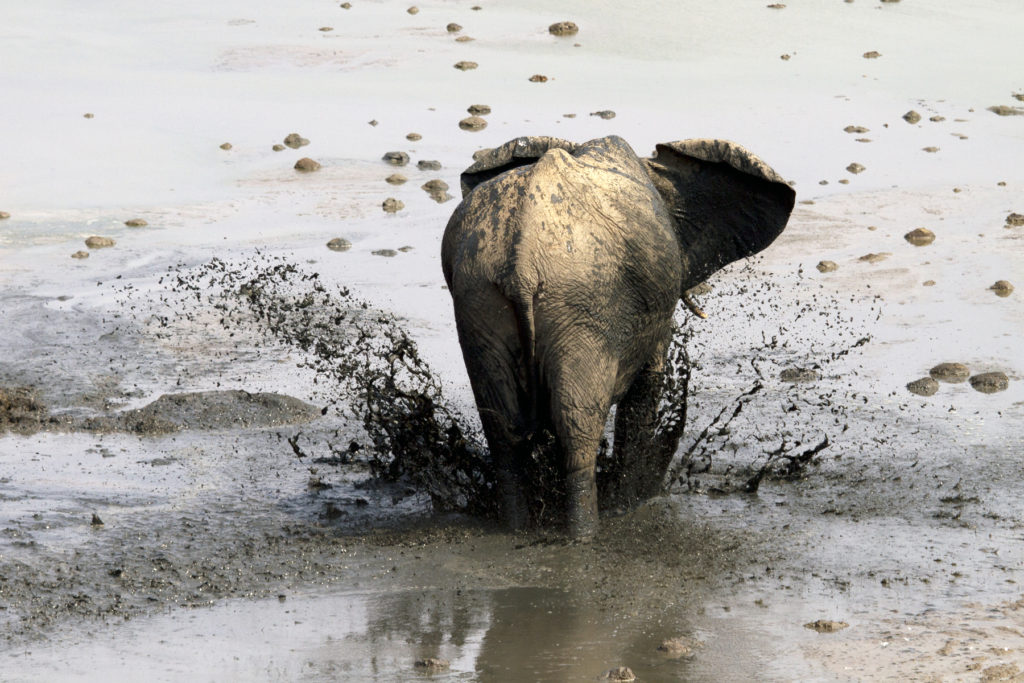Reports of deaths of elephants north of the Okavango Delta in Botswana is cause for much concern. The first carcass was found on the 11th May, 2020 near Seronga and the death toll has now risen to over 400. Both sexes and all ages are dying. Reports indicate that the animals can die suddenly but may also show signs of neurological damage such as lethargy, disorientation and circling prior to death. 70% of cases have occurred in close proximity to water.

As of now these deaths have been confined to northern Botswana with no deaths having been reported in Zimbabwe. However, the Delta is within the KAZA Trans-frontier Park spanning five countries, including Zimbabwe, and this has sparked concern in the Friends of Hwange community.
There are currently four avenues of investigation:
- Anthrax – Anthrax is an infectious disease caused by bacteria known as Bacillus anthracis. This can lie dormant in the soil in the form of spores for many years. Animals become infected by inhaling or ingesting spores in contaminated soil, plants or water. Diagnosis of an anthrax carcass is relatively simple and has been potentially ruled out as the cause of death in these cases.
- Malicious poisoning – Poisoning of elephants by poachers using cyanide carbamate, organo-phosphates or other poisons has happened in the past. This has also been ruled out because the carcasses have been found with their ivory intact. There have been no deaths amongst vultures or other scavengers.
- Naturally occurring poisons – Blue-green algae or cyanobacteria produce neurotoxins and liver toxins that are poisonous to nearly all livestock, wildlife and humans. There seems to be a gene that enables cynobacteria to produce or elicit production of toxic secondary metabolites known as cyano-toxins.
Blue-green algaes tend to accumulate on warm, stagnant bodies of water. Wind blows the algae to the downwind sides of the water bodies and animals such as impala and rhino which approach water from this side tend to be more susceptible to the poisoning than are elephants that go into the middle of the water. Numerous other animals would be represented in the deaths if cyanobacteria were this the cause.
4. Viral or bacterial infections
a. Encephalomyocarditis virus – In 1994 there was an outbreak of this virus resulting in the deaths of 64 elephants in Kruger National Park. The virus was isolated from the heart muscle of three fresh carcasses. Antibodies to this virus were found in blood samples dating from 1987. High levels of viral antibody were found in a host of rodent species, especially the multi-mammate mouse indicating that the virus could cross between these two species.
b. Bacterial hepatitis -In the past we have had a few cases of per-acute bacterial hepatitis associated with seasonal pans. These cases tend to taper off with the drying up of these pans.

It would seem likely that the deaths are being caused by either viral or bacterial infections. The collection and distribution of samples from the Botswana elephant carcasses has been hampered by the corona virus pandemic and subsequent lockdowns. However, samples have now been sent to regional and international laboratories and results are expected in the near future. An update will be posted when definitive information emerges.
Thanks to Dr Rob Rees, for his insight into this issue. Rob is a private veterinarian working in Zimbabwe and the Kaza region.

